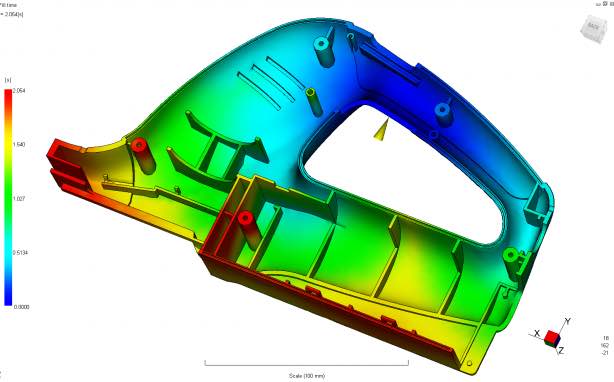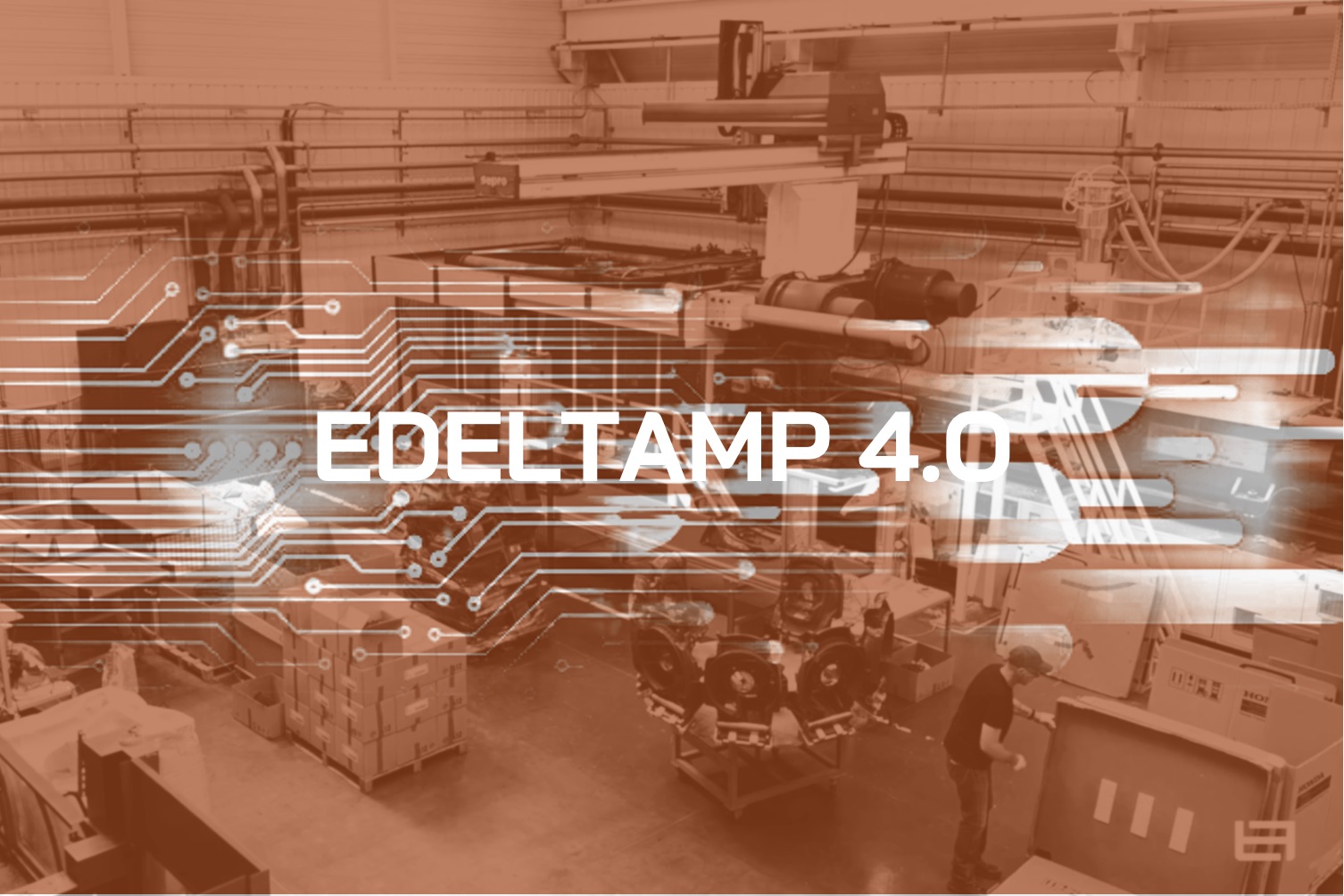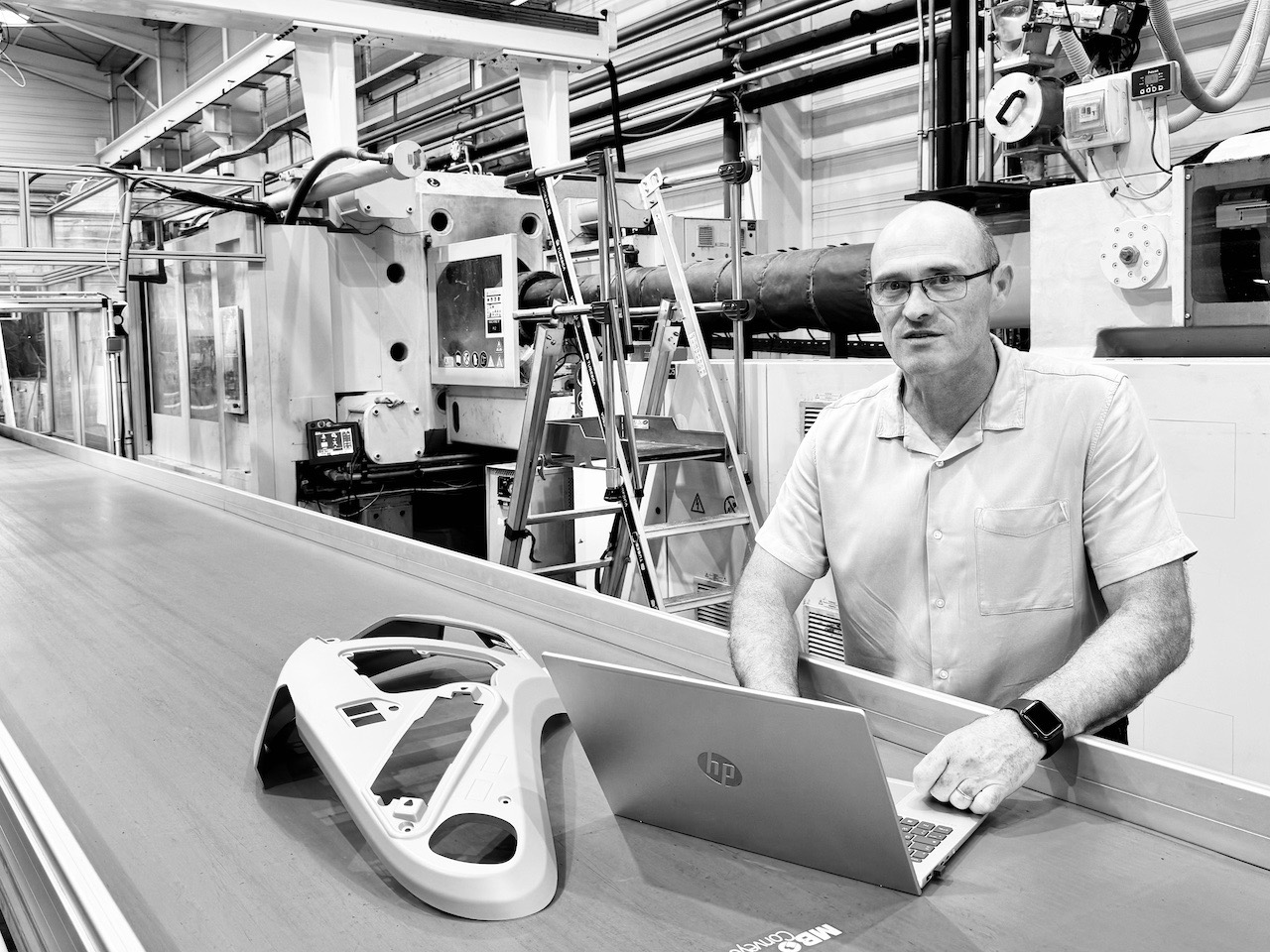HEAT FLOW CONTROL FOR POLYMER MATERIALS
The manufacture of high-quality polymer parts relies on the delicate equation of injecting a molten amorphous or semi-crystalline polymer into a mold cavity, cooling it to solidify it, then ejecting it...

Over many years, EDELTAMP has built up sought-after expertise in this succession of stages by bringing together the disciplines that this process requires: metallurgy, thermodynamics, rheology and digital engineering. Our systemic approach sees the mold not simply as a production tool, but as a thermo-mechanical system, capable of measuring, analyzing and adjusting its own parameters in real time to guarantee the stability and performance of injected parts.
Preventive flow analysis: simulate before you produce
Starting with the part to be injection-molded, which leads to the launch of the mold design study, moldflow analysis enables us to numerically simulate the behavior of the polymer in the cavity.
Color maps generated in 3D translate precise physical quantities into simulation: injection pressure, fiber orientation, thermal distribution, differential shrinkage or the appearance of air voids.
Engineers can then reposition injection points, adjust thicknesses, anticipate shrinkage rates or assess the risk of defects. This study phase reduces physical testing, shortens set-up times and guarantees that the part will be compliant right from the first print runs.
At EDELTAMPthis simulation is a strategic link in the industrialization cycle. It paves the way for the implementation of adaptive control in production. Engineers can then approach mold design with an enlightened vision and perfectly controlled parameters.
Mould design: a dialogue between metal and polymer
Mould design is where rheology, metallurgy and thermodynamics converge. TheEDELTAMP team combines numerical simulation and metallurgical know-how to anticipate thermal and mechanical constraints.
Based on all the information gathered upstream, in consultation with theEDELTAMPpartners, steel selection, heat treatment and alloy lay-up are adjusted to meet local pressure and temperature constraints.
Once the mold's architecture and metallurgical characteristics have been determined, it's time to consider how its temperature will be controlled during production.
Adapting Cooling: controlling thermal regulation
Adapting cooling is an advanced approach to steel part design, achieved through sintering or brazing processes.
It enables the integration of complex, optimized cooling circuits, positioned as close as possible to the mold cavities, ensuring temperature homogeneity in critical areas. It is particularly useful when conventional machining, limited by linear drilling constraints, is unable to achieve certain internal geometries.
For EDELTAMPadapting cooling is not an isolated technological innovation: it is a concrete lever for productivity, guaranteeing dimensional quality and repeatability of injected parts in mass production.
Polymer rheology: understanding matter in motion
Rheology, the science of deformation and flow, describes the viscoelastic behavior of polymers. It analyzes the way materials react under the effect of forces, whether they are solids, liquids or intermediates (pastes, gels, foams, etc.).
At temperatures between 200 and 400°C, their viscosity reaches values of the order of 10³ Pa-s, well above those of conventional fluids. These materials do not react linearly: their flow depends on temperature, shear rate and molecular structure.
Understanding this complexity is a prerequisite for any shaping process. In injection molding, the slightest variation in viscosity affects flow distribution, weld line formation and internal stresses.
At EDELTAMPrheological control is not limited to simulation: it guides the choice of materials, the geometry of feed channels and injection speed, and the compaction pressure, often several tens of megapascals, to ensure molecular cohesion and dimensional regularity of parts.
This understanding of material behavior naturally paves the way for mastering thermal regulation, the cornerstone of controlled cooling.
Thermodynamic control: cooling under control
In injection molding, the mold acts as a periodic heat exchanger, with intense thermal gradients running through it at each cycle.
Three mechanisms are involved: conduction through the steel, convection via the heat transfer fluid, and radiation between surfaces. Inadequate design of the cooling system or faulty thermal control lead to defects: warping, internal stresses, loss of gloss.
EDELTAMP approaches thermodynamic control as precision engineering. Cooling channels are dimensioned to optimize forced convection and guarantee a homogeneous gradient at the heart of the cavities, calculated from numerical modelling.
The aim: to homogenize the temperature of the footprint.
EDELTAMP's added performance value
Thanks to this global mastery, EDELTAMP aims to homogenize the temperature footprint with a maximum delta of 10°C.
This limits differential shrinkage, controls warpage and ensures cooling of small areas of steel in the mold, which might otherwise overheat. Without this control, cycle times would increase and material properties would deteriorate.
By combining thermal engineering, rheological control and numerical control, the result is tangible: controlled surface quality, dimensional stability, reduced cycle times, reduced maintenance and optimized costs.
With its philosophy of Moldflow andadapting cooling, EDELTAMP acts as an architect of the dynamic physics of materials, transforming thermoregulation in the field of high value-added thermoplastic injection molding into a real lever for innovation and industrial performance.
Other articles in this category
Keep up to date with EDELTAMP and how we're shaping the future of the plastics industry .


